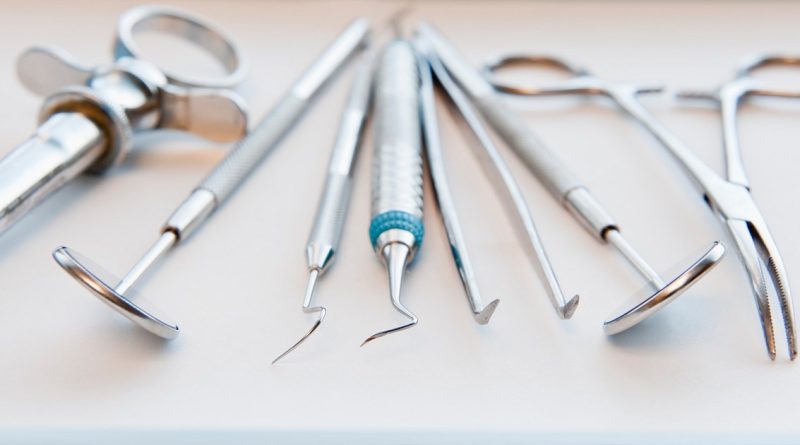Secrets for Getting Dental Instruments USA to Complete Tasks Quickly And Efficiently
In today’s fast-paced dental practices, efficiency is key to providing high-quality care while maximizing productivity. One of the fundamental aspects of efficiency in any dental setting is the proper utilization of dental instruments. From routine cleanings to complex procedures, having the right instruments and using them effectively can significantly impact workflow and patient outcomes. In this article, we’ll explore some secrets to getting dental instruments in the USA to complete tasks quickly and efficiently.
Efficient dental instruments are essential tools for any dental professional. They not only enable dentists to perform procedures with precision but also contribute to patient comfort and safety. Whether it’s a routine check-up or a complex surgical procedure, having the right instruments can make all the difference in delivering optimal care.
Choosing the Right Dental Instruments
Selecting the appropriate Dental Instruments USA is the first step towards efficiency. It’s essential to understand the specific needs of your practice and choose instruments that align with those requirements. Factors such as material quality, ergonomics, and durability should be considered when making purchasing decisions.
Proper Maintenance of Dental Instruments
Maintaining dental instruments in optimal condition is crucial for both performance and longevity. Regular cleaning and sterilization are imperative to prevent cross-contamination and ensure patient safety. Additionally, proper maintenance protocols can help extend the lifespan of instruments, reducing the need for frequent replacements.
Organization and Storage
Efficient organization and storage of dental instruments can streamline workflows and minimize downtime during procedures. Implementing storage solutions such as instrument trays and cabinets can help keep instruments organized and readily accessible when needed.
Staff Training and Education
Investing in the training and education of dental staff members is essential for maximizing efficiency. Proper training ensures that staff members are proficient in handling and using dental instruments effectively. Additionally, continuous education allows staff to stay updated on the latest techniques and technologies in dental care.
Utilizing Technology
Integration of technology can significantly enhance efficiency in dental practices. Digital tools such as intraoral cameras, CAD/CAM systems, and electronic health records streamline processes and improve workflow efficiency. Embracing technology-driven solutions can lead to better patient outcomes and increased productivity.
Time Management Strategies
Effective time management is critical in a busy dental practice. Prioritizing tasks based on urgency and complexity can help optimize productivity. Additionally, techniques such as batch scheduling and delegation of tasks can minimize downtime and maximize efficiency during procedures.
Collaboration and Communication
Efficient communication and collaboration among dental team members are essential for seamless workflow. Clear communication ensures that everyone is on the same page regarding patient care plans and procedure protocols. Encouraging open communication fosters a collaborative environment where everyone works together towards common goals.
Maintaining Patient Comfort and Safety
While efficiency is important, it should never come at the expense of patient comfort and safety. Dental professionals must prioritize patient well-being and adhere to strict infection control protocols. Creating a safe and comfortable environment for patients enhances their overall experience and contributes to practice success.
Overcoming Challenges
Despite the best efforts, dental practices may encounter challenges in instrument utilization. Common issues such as instrument breakage or supply shortages can disrupt workflow and affect productivity. Implementing strategies for problem-solving and resource management can help overcome obstacles and maintain efficiency in the long run.
Case Studies and Success Stories
Real-world examples of practices achieving efficiency with dental instruments serve as inspiration for others. Case studies highlighting successful implementation of strategies such as technology integration or workflow optimization can provide valuable insights for improving efficiency in dental practices.
Future Trends and Innovations
The field of dental instrument utilization is constantly evolving with advancements in technology and techniques. Emerging trends such as 3D printing, laser dentistry, and digital scanning are shaping the future of dental care. Staying informed about these innovations allows practices to stay ahead of the curve and maintain a competitive edge.
Conclusion
Efficiency with dental instruments is essential for delivering high-quality care and maximizing productivity in dental practices. By choosing the right instruments, implementing proper maintenance protocols, embracing technology, and fostering a collaborative environment, practices can streamline workflows and enhance patient outcomes.
FAQs
Q1: How often should dental instruments be sterilized?
A: Dental instruments should be sterilized after each use to prevent cross-contamination and ensure patient safety.
Q2: What are some common mistakes to avoid when selecting dental instruments?
A: Common mistakes include overlooking quality and durability, neglecting to consider ergonomics, and purchasing instruments without assessing specific practice needs.
Q3: How can I encourage my staff to embrace new technology in our practice?
A: Providing comprehensive training and education, highlighting the benefits of technology adoption, and fostering a culture of innovation can encourage staff members to embrace new technologies.
Q4: What are the benefits of investing in high-quality dental instruments?
A: High-quality instruments offer better performance, durability, and ergonomics, ultimately leading to improved patient outcomes and reduced long-term costs.
Q5: How can I assess the efficiency of my current dental instrument utilization?
A: Conducting regular assessments of workflow processes, monitoring instrument maintenance and sterilization protocols.

